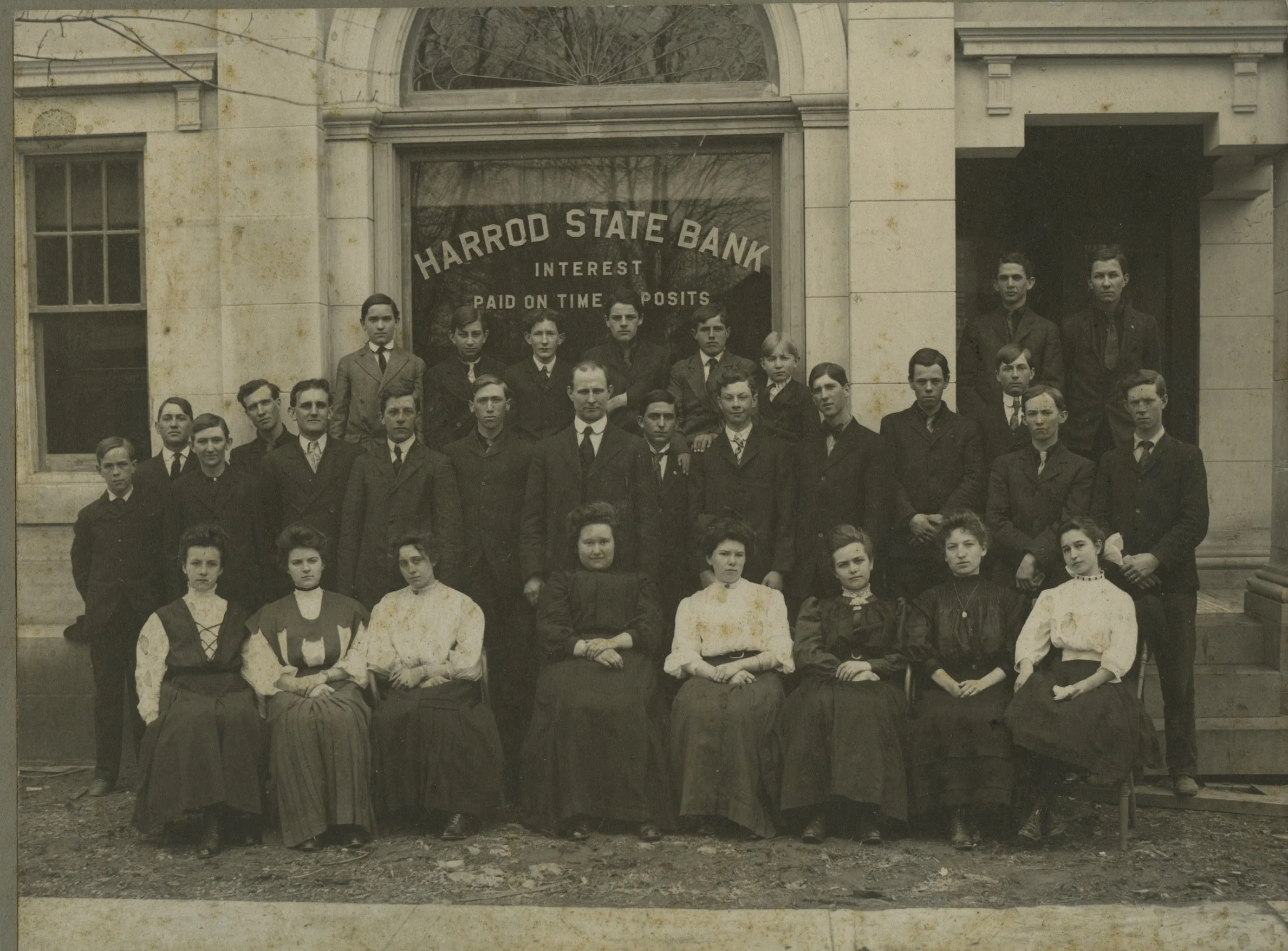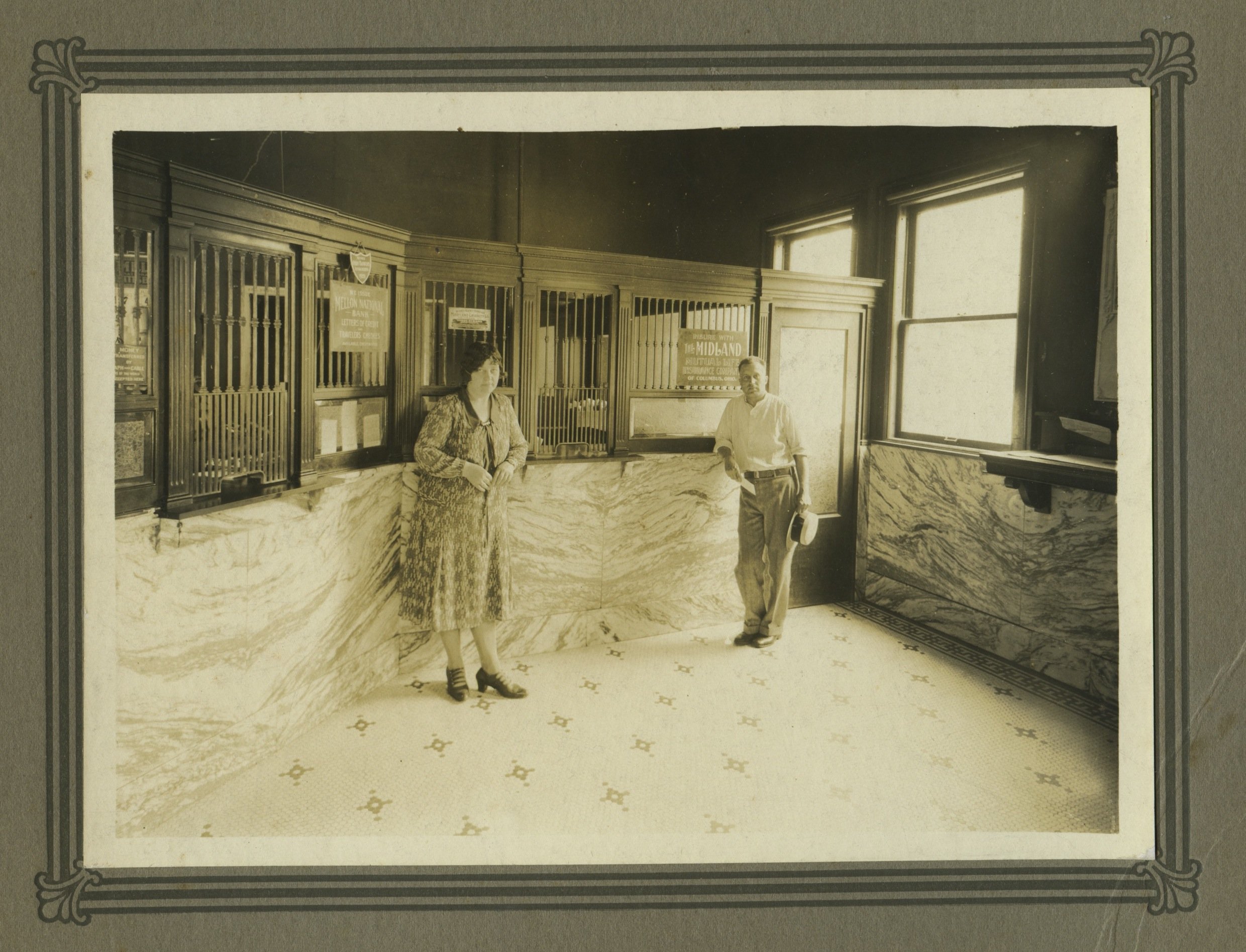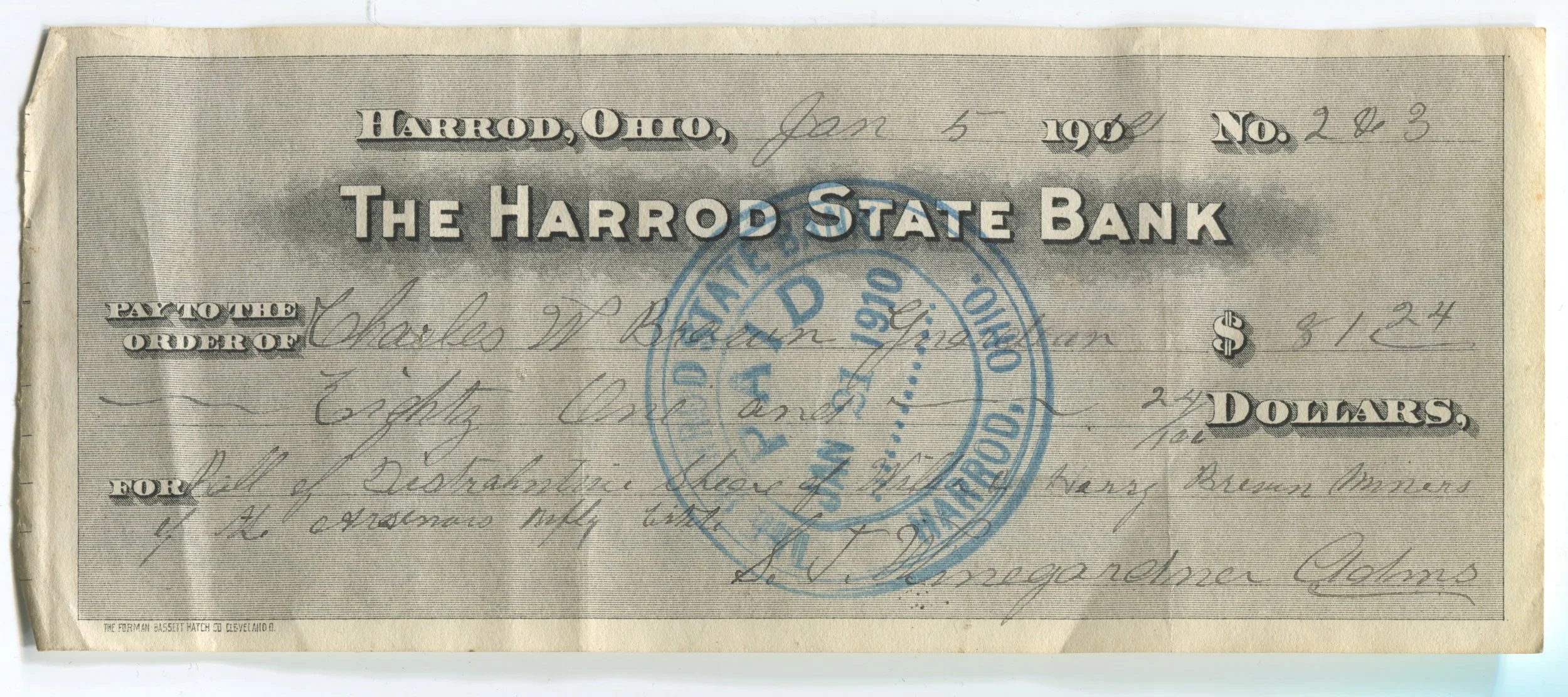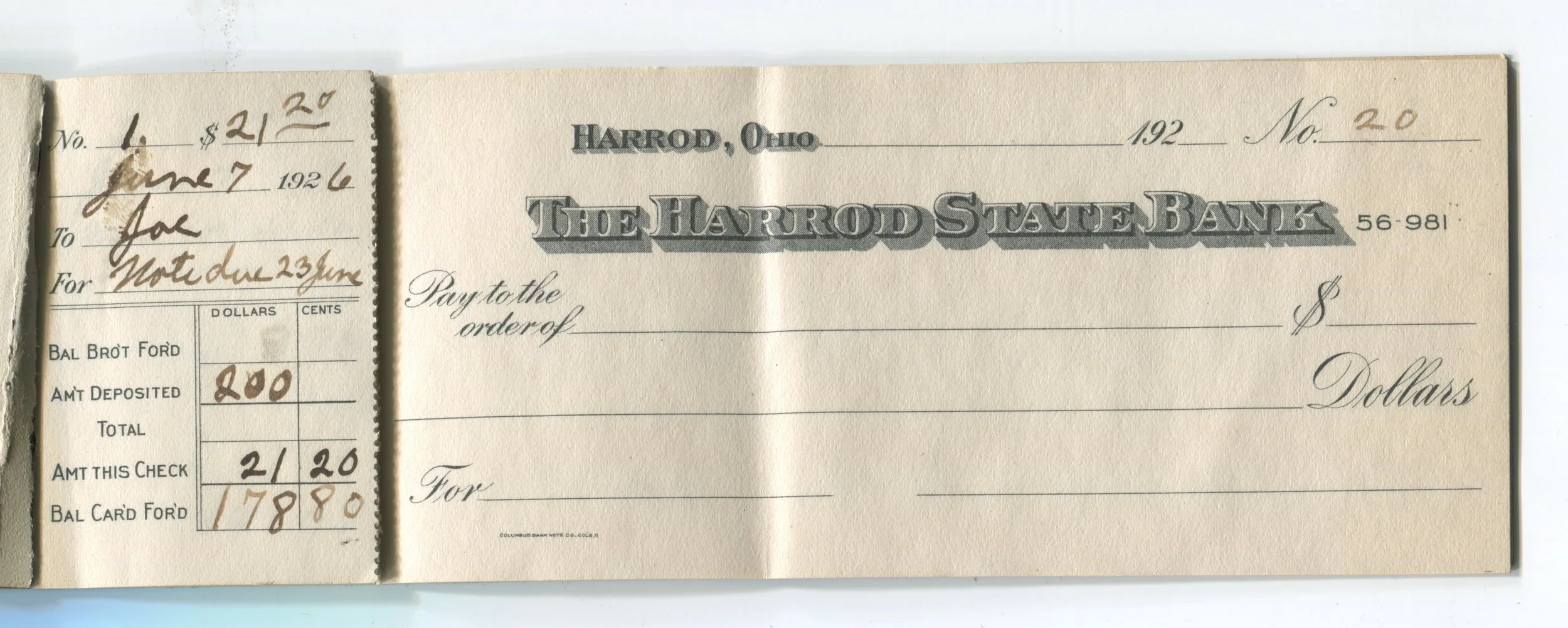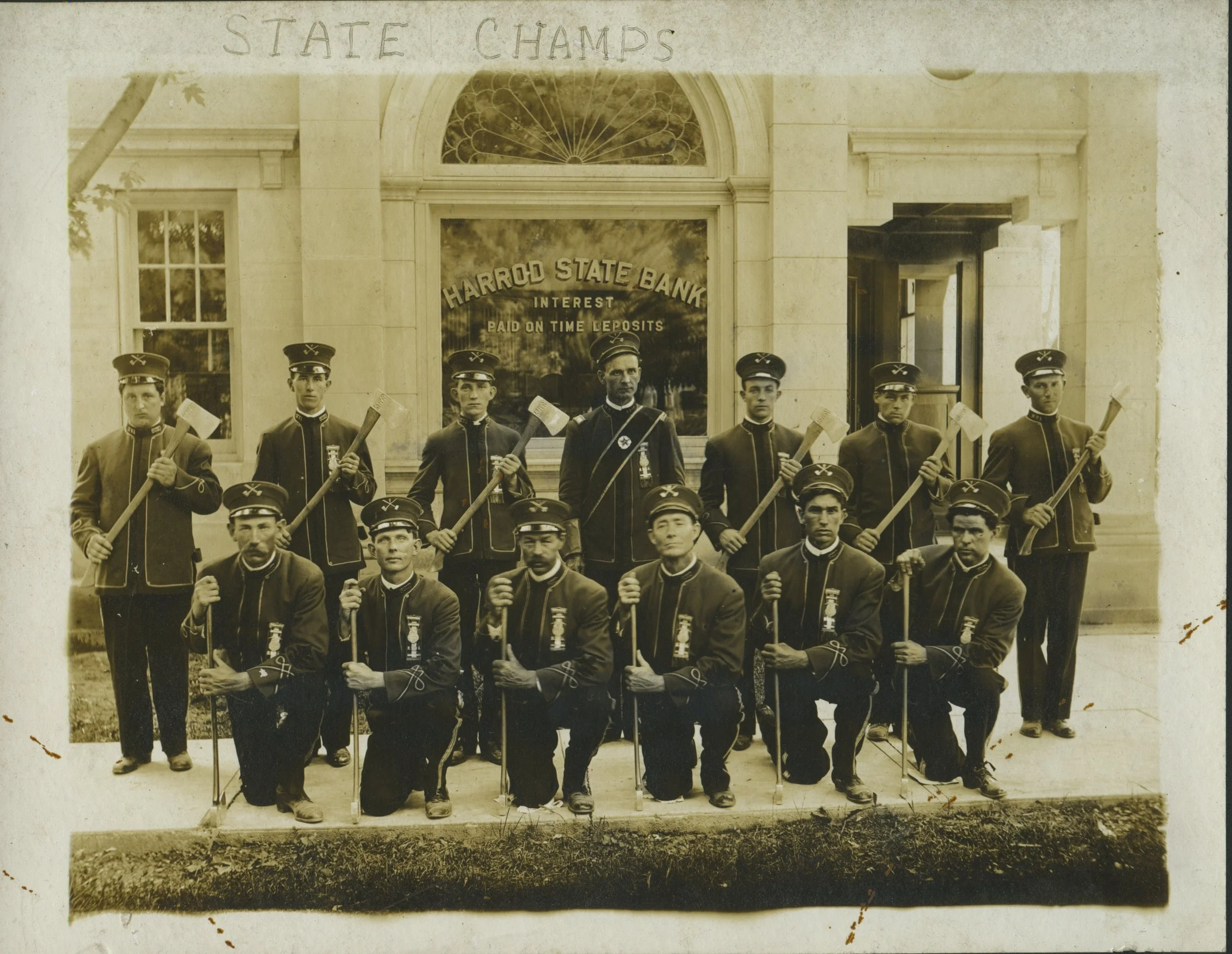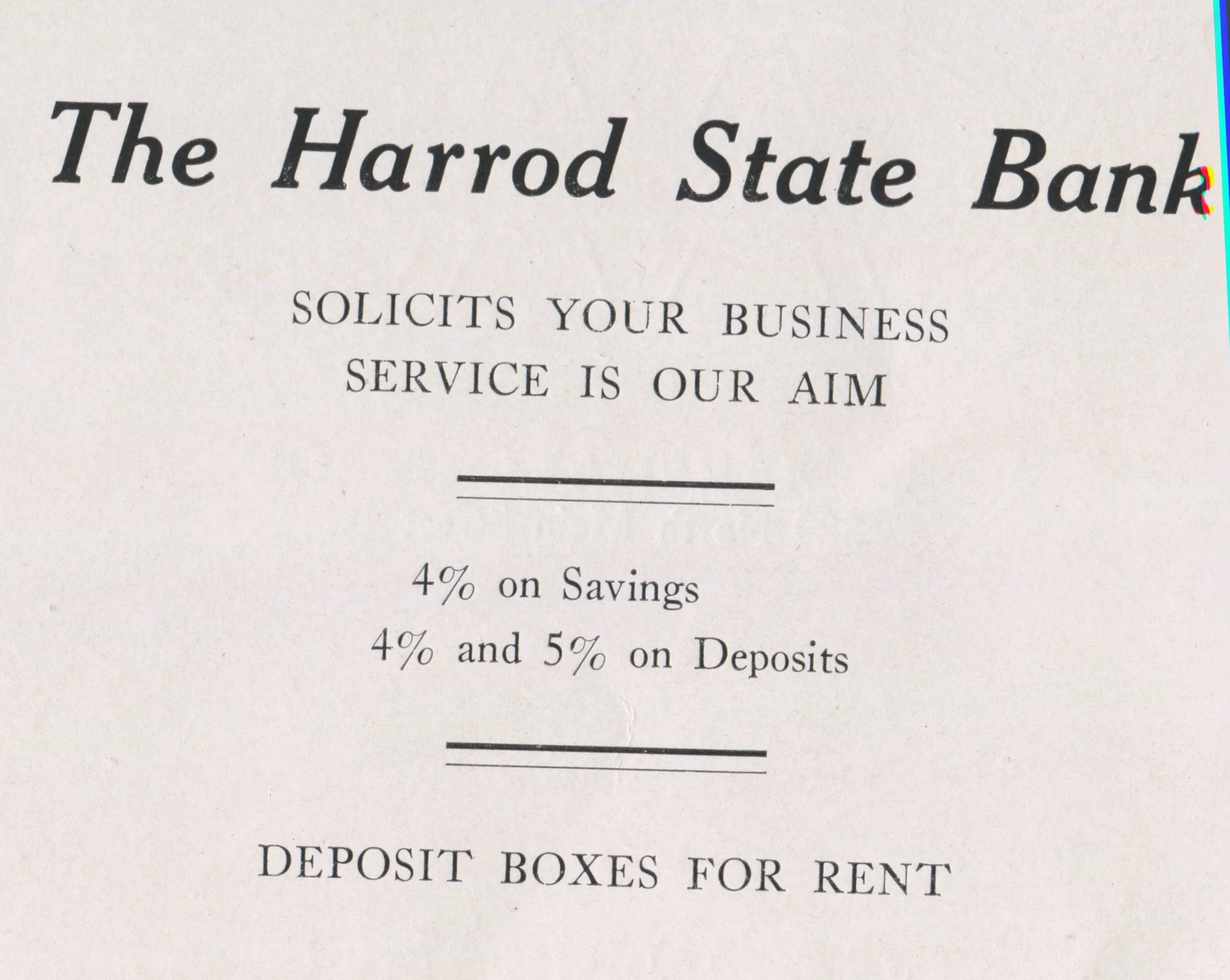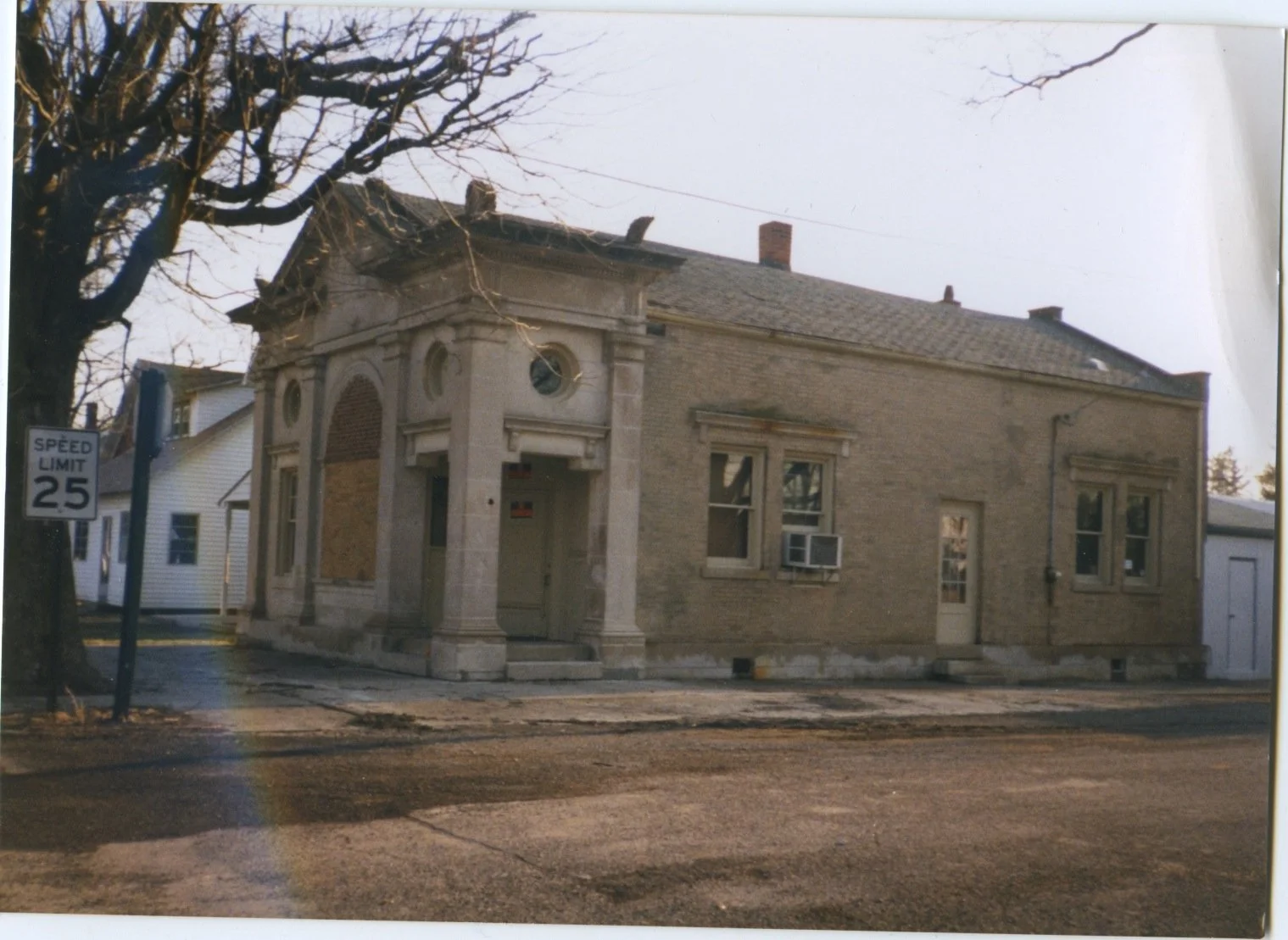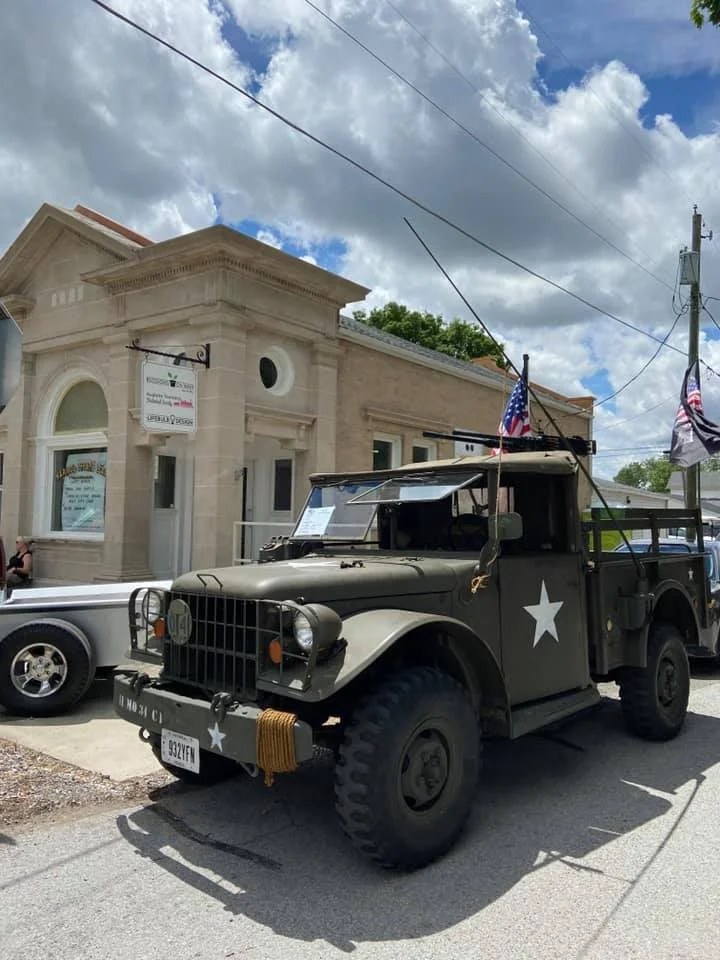The Harrod State Bank - Our Humble Home
A group of Harrod’s finest pose in front of the Harrod State Bank, soon after the building was complete.
The State Bank of Harrod opened the doors to the public in the autumn of 1907. Louis Harrod major organizer of the Institution served as its first President. Dr. M. L. Johnston, Clyde K. Hay, Charley Cochensparger, Elmer Johnston, Clinton Johnston, John Grubb and Rush White made up the Board of Directors. Walter Harrod, oldest son of Louis, was the first cashier hired for the bank. In following years this position was filled by Earl P. Harrod (father of Louis Harrod the veterinarian) – Lloyd Harrod and Walter Hyre.
For 25 years the Harrod State Bank served the citizens of this tiny community. But the collapse of the Old National Bank of Lima caused the Harrod Bank to loose assets on the deposits in that facility. When State Bank examiners demanded that the Harrod Bank cover the dollar amount lost in Lima, the Directors were unable to comply. The assets of the bank were seized. On July 21, 1931 the Superintendent of Banks of the State of Ohio took possession of the business and property and closed the doors forever. The laws were such at that time, that all directors were held responsible for the funds of the bank.
All assets belonging to those unable to pay were seized by the state, with confiscated land being sold at public auction. The closing resulted in bankruptcy for many of the directors involved. On March 18, 1936, the building and premises were sold by order of the Court of Common Pleas of Allen County.
Pictured below is the interior of the bank with Bank Teller - Ruth Grubb McPheron. The building now houses the Auglaize Township Historical Society and archives. For many years the Bank building was a American Legion/Bar.
Ruth Grubb McPheron and and unknown man stand in the lobby of the Harrod State Bank.
“The Harrod State Bank I Knew”
The Harrod State Bank was organized, circa 1905, as the brainstorm of Louis B. Harrod. Mr. Harrod was a farmer of 300 acres, 1 ½ miles west of Harrod on Phillips Road. He was majority stockholder and elected President of the Bank and served as such the period of its existence. The Bank Board was composed of Dr. M. L. Johnston, the local Physician; Charley Cochensparger, farmer living on Rt. 309; John Grubb, farmer living on Napoleon Rd.; and Rush White, farmer living on Napoleon Rd. south of Harrod.
The first Cashier was Walter E. Harrod of Harrod, living on South Main St. in the home that is now owned by Jim and Sue Harrod. At the death of Walter Harrod in 1913, Earl P. Harrod was named Cashier serving until 1920. In 1918 a new school was proposed for East Auglaize Township. Two factions developed; one wanted a new school to be built near the Auglaize Church and cemetery on Phillips Rd.; the other faction wanted a school in Harrod where most students lived. The resulting controversy caused a great strain on the Bank because Louis B. Harrod supported the Harrod site for the school. Disconsolate depositors would one day remove their funds from the Bank and in a few days return them. The Bank weathered the storm, and a new school was built in Harrod.
Earl P. Harrod resigned in 1920 because of illness. He was replaced by Lloyd G. Harrod, who served a short time and decided that career was not for him. Walter Hyre was selected as cashier and served until (circa 1930) at the Banks foreclosure.
In 1930, the Great Depression was in full swing. People did not have money to repay loans, and banks did not have money to lend. Harrod Bank was struggling to maintain good business practices, until one day the Bank Examiner arrived for the routine audit of the Bank. The Examiner came to a point he asked, “where is the $5,000 in assets?” The Cashier explained it was on deposit with the Old National Bank in Lima. The Examiner immediately declared “we closed that bank this morning and instituting foreclosure. You are now closed.” The $5,000 was not available to the Bank, so it was short.
The Ohio State Banking Department sent Mr. Cecil Arn from Kenton to conduct closing procedures of the Bank. Mr. Arn and family established residence in Harrod. He was also engaged in closing banks in LaFayette and Waynesfield. This took about two years. In those days, banking laws were not in place to protect depositors. The stockholders were obligated to reimburse the depositors. Today Federal Depositors Insurance protects both the banks and its depositors.
The Harrod State Bank stockholders had only two casualties. Rush White lost his farm on Napoleon Rd. and Louis B. Harrod lost all of his assets. Some good came from the Bank failure, the depositors were paid in full.
One stockholder told me he received a letter from the Toledo Governing Office that he owed $750 as his share of the stock obligation. He wrote them he was sending a check for $75 which was all he had. He did not hear from them again.
The Vault of the Bank was sold to the LaFayette Elevator Co. who used it for many years. (The vault is now owned in a private collection outside of LaFayette.) The hot water heating was purchased by LeRoy Miller who installed it in his home. As a seven-year-old customer in 1929, I recall how Ruth (Grubb) McPheron, Bank Clerk, demonstrated to me how she could touch her nose with her tongue.
Written by: Louis W. Harrod
March, 2008
Bank Notes from Jan 21, 1910
Blank Bank Notes from the 1920’s
The Modern Woodsmen of Ohio pose in front of the newly built bank at the turn of the century.
Modern Woodmen of America is a member-owned fraternal financial services organization. Together their members have existed since 1883.
The Harrod Bank Robbery
It was May 12th in the year 1920. It was a day just like any other in Harrod. At the closing time, Assistant Cashier, Marie McGough was at work counting the days receipts. Walter Gyre, Head Cashier, was just outside the Wicket when the doors were flung open, and four men came rushing in.
With revolvers in hand, the bandits ordered Mr. Hyre and Miss McGough to put their hands up and face the wall. Terrified the two obeyed and for fifteen minutes did not move a muscle. Suddenly a young man of about 18 began to tie the hands and feet of Mr. Hyre with rope and did the same to Miss McGough. They were then thrown into the vault and the door locked firmly behind them.
Grabbing the loot – this foursome made their gateway in a seven passenger Studebaker.
Fifteen minutes later, 14-year-old Janitor, Lester Leatherman, reported for work. Finding the Front Door locked, Lester entered the Bank from the rear entrance and heard the cries of help coming from the vault.
Instructed by Walter Hyre, Lester worked the combination and freed the two prisoners.
The Alarm was immediately given and possess of citizens banded together to pursue the robbers. William Smith, William Higley and Arthur Leatherman, who were in hot pursuit of the escaping vehicle, traced the car as far as Pandora, but the trail went cold. The robbers managed to get $5,546 in Cash, $1,000 in Money Order Forms, and $200 in War Savings Stamps. The robbers were never apprehended.
Ad from 1924 Harrod High School Echo Yearbook for The Harrod State Bank
The Harrod State Bank Building prior to restoration in the late 1990’s
The front facade of the Harrod State Bank Building as it stands today. Home of the Auglaize Township Historical Society and archives.
Match Box artifact from the American Legion in Harrod, Ohio that was located in the bank building.
The Harrod State Bank is the perfect backdrop for the annual car show at the Pork Rind Heritage Festival.
The front arch window of the bank building before restoration.

